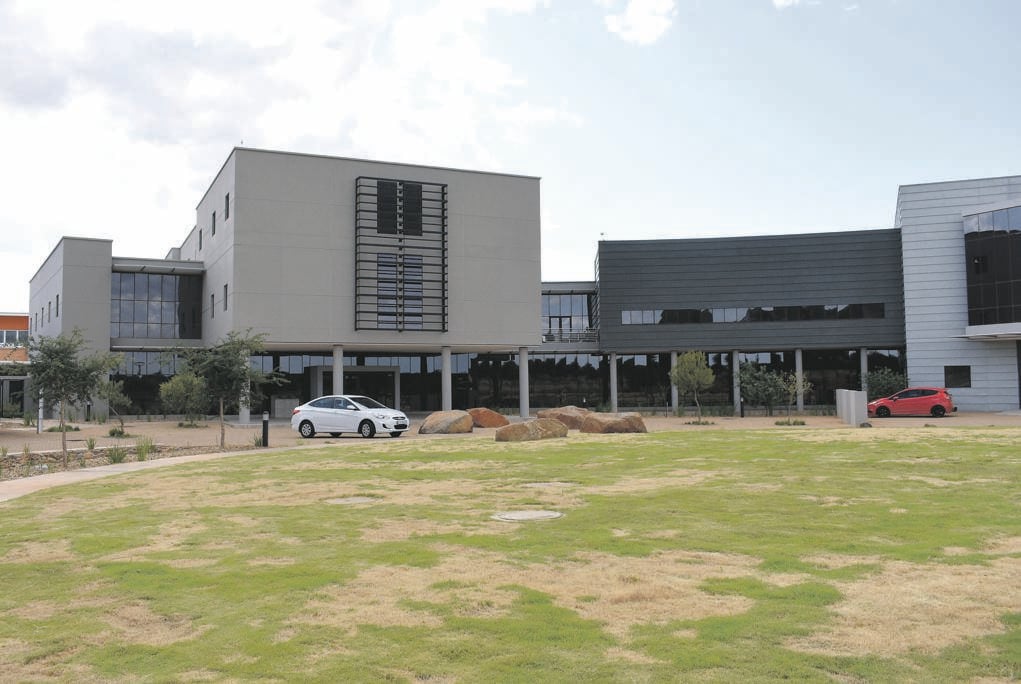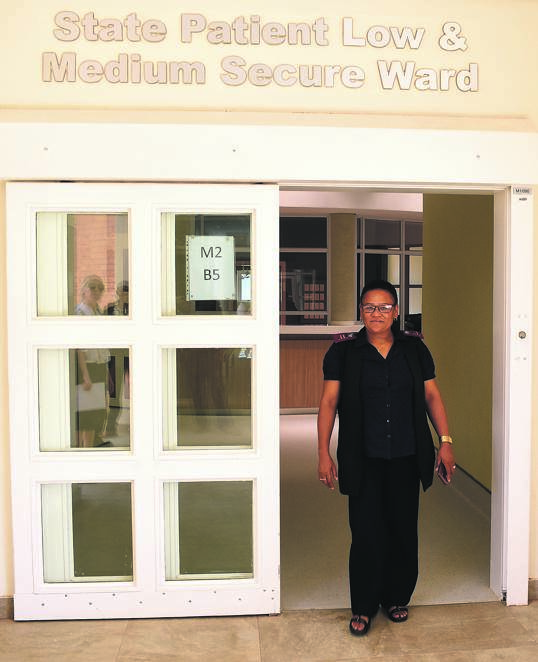
After a 13-year construction effort that saw costs soar, the infrastructure stands proud but staff and medicines are in short supply and patients cannot be accommodated.
Seven kilometres from Kimberley’s famous Big Hole sits another of the mining city’s record-breaking landmarks: South Africa’s most expensive mental health hospital.
With a price tag estimated at R2 billion, Kimberley Mental Health Hospital in the Northern Cape has certainly left a big hole in taxpayers’ pockets.
Originally budgeted at R290 million, costs ballooned as construction dragged on for 13 years.
For long periods, the building site perched derelict and ghostly on the city’s fringes, with vandals and weather conditions destroying existing structures.
“A monument of corruption at an unprecedented scale.”
This is how Northern Cape Premier Zamani Saul described the hospital at its official opening on September 30 last year.
Media reports have recorded the hospital’s estimated cost at different amounts.
When Spotlight put the R2 billion figure to provincial health MEC Mase Manopole, she concurred.
It would appear, though, that the exact extent of cash squandered on the hospital is hard to compute.
Set among thorn trees scattered over dusty koppies, the new hospital sprawls across 336 000 square metres, its 36 orange and grey blocks jutting against the sky.
Despite the magnitude of its impressive exterior, the hospital is still running at less than half of its full capacity.
Of the 287 beds available, only 110 patients can be admitted.
This, top management says, is because of a lack of funding for staff and medical supplies.
HAWKS INVESTIGATION
As a Hawks investigation into the corruption allegations nears completion, Manopole, in an encouraging show of candour and transparency, has arranged for Spotlight to be taken on a tour of the premises.
At the hospital’s glass-encased administration wing, chief executive officer (CEO) Albert Links, acting nursing service manager Victoria Nero and assistant director of security Clement Kaotsane welcome us inside.
We make our way to a boardroom on the second floor. Underfoot, pale tiles gleam in the sun. Walls are pink and grey, with chrome handrails flanking the stairs.
“It’s beautiful, isn’t it?” says Nero. “We really hope it stays like this. We hope and pray to God.”
There is a tangible sense of pride.
At the boardroom table the hard questions are directed at Links.
Given that it took 13 years to complete the hospital, at an estimated cost of R2 billion, why is even more money required to open the entire facility?
“So, the money spent, that which you are referring to now,” says Links, “it was the infrastructural spend for the building. Now that the hospital infrastructure is eventually done and has been officially launched by the premier, we need to operationalise it in terms of getting services running.”
Links says more patients will be admitted, subject to the availability of funding.
And the corruption allegations?
“Obviously, I cannot comment on those as an investigation is being undertaken,” says Links.
“All we can say is that there was alleged corruption and that it is currently before an investigation.”
Links started his tenure as CEO at Kimberley’s old West-End Hospital in June last year, later transferring with patients to the new hospital premises.
FOUR PSYCHIATRISTS
In terms of human resources, the hospital can afford to appoint four psychiatrists and 80 nurses.
“We are looking at increasing that,” says Links.
“But this number is reasonable for our current intake of 110 beds. We are breaking even. When we speak of opening more beds, we will need more staff. The problem is that the budget is not always sufficient to recruit and appoint a workforce.”
The hospital accepts patients from all over the province, he says.
There are two types of patients: voluntary patients, who are referred by general practitioners – “someone who says: ‘I have a problem, I need admission’”; and assisted or involuntary patients, who lack that insight or judgement – “they are admitted by a family member or clinician, who make the decision on their behalf in the best interest of that person and for the safety of the community”.
‘PATIENTS ARE HUMAN BEINGS’
Nero weighs in on caring for patients.
“I always say to the staff at the induction and orientation that they must remember this: Patients are human beings. We need to understand that patients will also get angry; they will also cry.”
Later, while walking around the State Patient Unit, in the M Block, Nero points out a “seclusion room” attached to a ward.
The spacious room has a mattress on the floor, a window to the outside, a window looking out on to a communal area, a loo and a washbasin.
There are no sharp corners or edges – taps are operated by flat buttons built into the wall, and the water spout is rounded.
“If the patient gets aggressive, the seclusion room is where he or she is restrained,” says Nero.
“The doctor will come and prescribe medication to sedate them. It must not be seen as a punishment for the patient. It really is to protect the patient from harm and to protect the staff.”
Links adds: “There are no straitjackets, no chains, no handcuffs. No, no, we simply isolate the patient next to his or her ward in the seclusion room.”
FORENSIC OBSERVANDI
The hospital is situated down the road from the city’s prison.
It is supposed to house “forensic observandi” – prisoners who need to be observed over 30 days to ascertain whether they are mentally fit to stand trial.
But at this point, it does not have the capacity.
Prisoners suspected of suffering from mental illness are kept at the prison, with state psychiatry teams travelling to do the observations.
At the time of our interview, 68 prisoners needed to be observed in this manner, with state capacity to observe only three a month.
This bottleneck poses a dire challenge to the departments of health and correctional services, and to the justice system.
Should a forensic observandi be found to be unfit to stand trial, he or she becomes a state patient.
“A state patient is someone who committed a serious crime,” says Links.
“And according to the observations done by our team, he or she cannot be held liable. So currently, we have 39 state patients.”
At the time of our visit, the M Block’s 80 beds were empty – with the 39 state patients set to be transferred from the West-End Hospital.
Nero confirmed last week that the state patients had been transferred.
GETTING BETTER
Inside the section, bright couches adorn communal spaces, with flatscreen televisions mounted on walls.
To one side, a fenced-in courtyard is covered in AstroTurf.
Along gleaming corridors, the smell of disinfectant hangs in the air. Bedrooms are sunwashed, with lime green beds covered in blue bedding.
Do patients get better? “Certainly,” says Links.
“Patients who come in here, they don’t stay forever. The average length of stay for a patient is 17 days. Sometimes more, due to factors like social reintegration and so forth.”
Our tour of the facility finished, the question hangs in the air: Is it not a waste of money to build a facility this large, if there isn’t available budget to put it all to use?
Links simply raises his shoulders and says: “Unfortunately, yes.”
This article was produced by Spotlight – health journalism in the public interest.
TALK TO US
How should operational costs – when they are made available – be allocated to enable the hospital to be fully functional?
SMS us on 35697 using the keyword HEALTH and tell us what you think. Please include your name and province. SMSes cost R1.50.
 | ||||||||||||||||||||||||||
Get in touchCity Press | ||||||||||||||||||||||||||
| ||||||||||||||||||||||||||
| Rise above the clutter | Choose your news | City Press in your inbox | ||||||||||||||||||||||||||
| City Press is an agenda-setting South African news brand that publishes across platforms. Its flagship print edition is distributed on a Sunday. |




 Publications
Publications
 Partners
Partners









